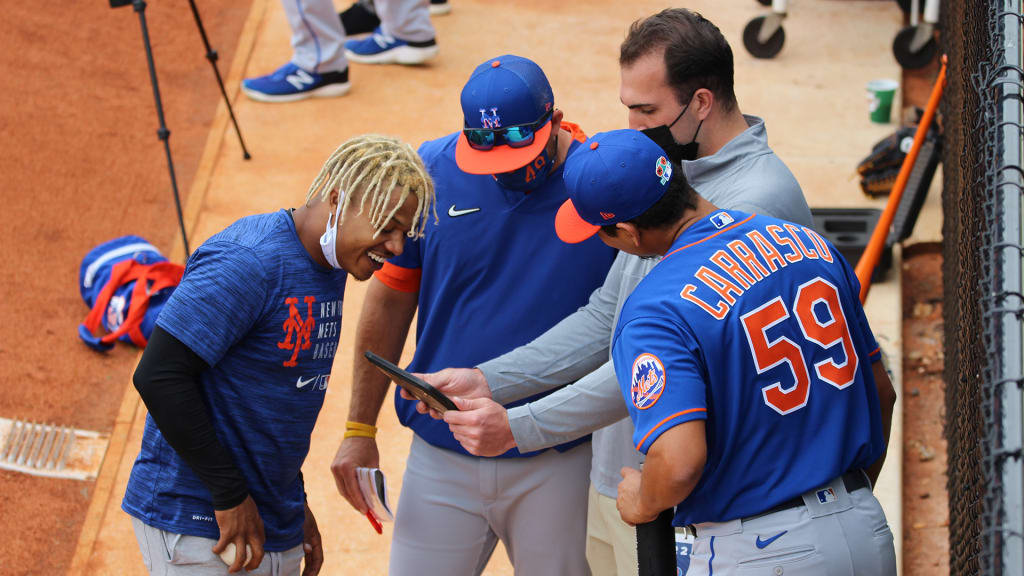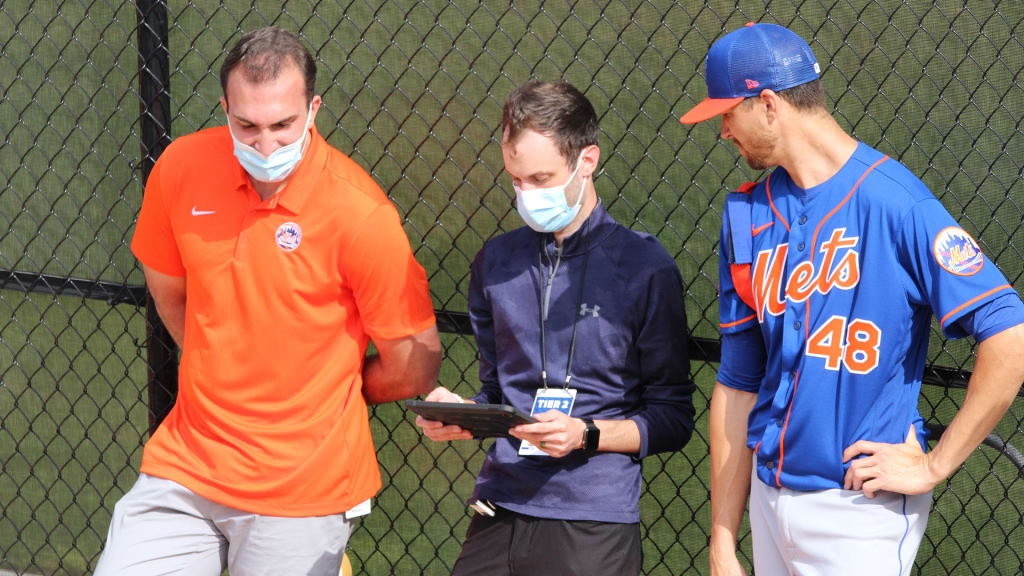
When Ben Zauzmer arrived in the Mets’ front office this winter, the Mets employed only one analyst with a focus on data science. They now have three on the payroll, with plans to hire four more before midsummer. Tack on developers and baseball systems employees, and that number jumps to 19 bodies in the analytics department, with another hire imminent and a few more in the near future.
Running it all is Zauzmer, a 28-year-old whom the Mets hired away from the Dodgers this offseason to be their new director of baseball analytics.
“There’s just a lot to be excited about with this opportunity,” Zauzmer said last week in a telephone interview. “It’s the chance to help build something new -- in many ways from scratch, but in many ways building on what they already have here. It’s a nice combination where there’s a ton of resources that will be at our disposal, there’s a ton of really talented people who are already in the building. But also a fresh start.”
Since joining the Mets, Zauzmer has focused much of his energy on hiring analysts to fill out the Mets’ staff. Among them: Tatiana DeRouen, who previously spent two years as a software engineer at Boeing; Desmond McGowan, a Columbia Business School graduate previously with the Yankees; Jake Toffler, who worked for the Astros; and several others. In that manner, the Mets are rapidly catching up to other teams with analytics staffs larger than their own.
The end goal is not for the Mets to catch up, of course, but to innovate. One of the team’s next hires will be a data scientist who, in Zauzmer’s words, is “strictly a biomechanical analyst.” Like most teams, the Mets consider injury prediction, prevention and recovery the game’s most exploitable inefficiency, provided someone figures out how to exploit it.

The Mets break their analytics employees into three buckets. One is a group of statisticians who have strong quantitative backgrounds. The second is a group of developers who can create systems to display and interpret data. The third contains liaisons who can take that data and bring it to the clubhouse in digestible ways. That third group is the most public-facing, with analysts David Lang, Jared Faust and Jack Bredeson often seen sharing data with pitchers during Spring Training bullpen sessions. They also work hand-in-hand with pitching coach Jeremy Hefner and manager Luis Rojas, who are both analytically inclined.
In that manner, Mets analysts have implemented many of their findings on the field this spring, and players have become increasingly receptive of the feedback. Brandon Nimmo, for example, has shifted his start position further back toward the center-field wall on a tip from the Mets’ analytics team. Reliever Jared Barnes made the team after changing both his repertoire and strategies on the mound. Manager Luis Rojas is strongly considering using an “opener” during the regular season.
Tack on all the ways in which the Mets use analytics in the area of player acquisition, and it’s clear the atmosphere is changing. Under Zauzmer, the Mets aim to become an analytics giant, much in the mold of the Dodgers and Yankees.
“The goal, ultimately as I see it, is to be the class of baseball when it comes to this stuff,” Zauzmer said. “I see no reason why in the long run, we can’t. We have the resources. We have the backing from ownership, from leadership. And I think we’re bringing in some really, really talented people.”
Bob is back
A day after learning he had made the Mets’ Opening Day roster, Robert Gsellman responded with one of his best outings of the spring in the Mets’ 3-3 tie with the Cardinals: a scoreless inning that lowered his ERA to 5.00.
“It’s getting better each outing,” Gsellman said.
The Mets are relatively unconcerned about Gsellman’s spring results, knowing his repertoire -- most notably, a sinker that sits comfortably in the mid-90s -- remains strong. Even so, Gsellman’s roster status was unclear until Mets officials determined they did not want to guarantee veteran left-hander Mike Montgomery $2.25 million for making the team. Rather than pay that amount, the Mets released Montgomery and added Gsellman to their Opening Day mix.
Rotation order
The Mets have officially announced Jacob deGrom and Marcus Stroman as their starting pitchers for the first two games of the season. After that, the rotation remains fluid.
Taijuan Walker, who threw five innings of two-run ball Monday against the Cardinals, could pitch third, but the Mets are also considering breaking up lefties David Peterson and Joey Lucchesi to prevent them from pitching on consecutive days against the Phillies. That might result in Walker slotting fourth.
Another way the Mets could achieve that is by taking advantage of Friday’s off day. The team is considering bringing Jacob deGrom back on regular rest for the fifth game of the season, which would create a season-opening rotation of deGrom, Stroman, Walker, Peterson, deGrom and Lucchesi -- in that order.
From the trainer’s room
When camp broke on Monday, the Mets left five rehabbing players behind: starting pitcher Carlos Carrasco, relievers Seth Lugo, Drew Smith and Arodys Vizcaíno and outfielder José Martínez.
Carrasco (torn right hamstring) has begun a throwing program, but remains in a “week-to-week” progression, according to Rojas. Lugo (recovery from right elbow surgery) has yet to begin throwing, but could do so soon. Closest to joining the Mets is Vizcaíno (right elbow soreness), who hit 98 mph in camp but must pitch on back-to-back days before the club will consider activating him.
